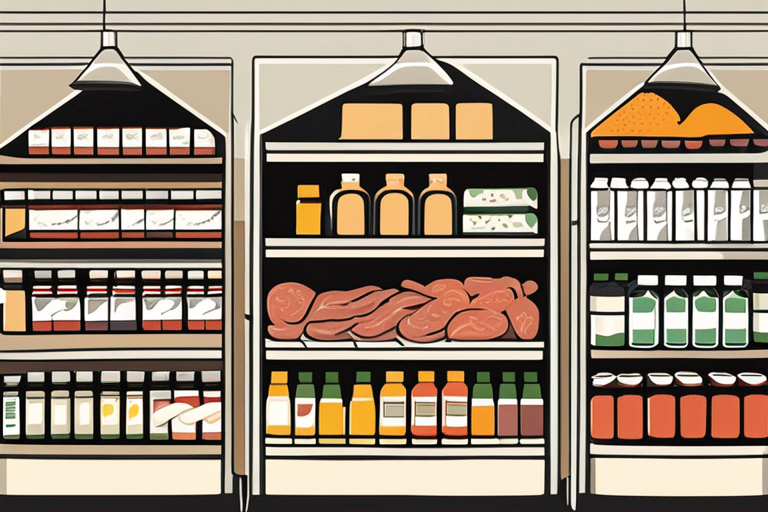
Understanding "Best if Used By" Date on Food Labels
Get Your Free Food Safety Cheat Sheet
30 most common foods with instant answers. Print it and stick it on your fridge—completely free!
Understanding "Best if Used By" Date on Food Labels
When you go grocery shopping, you might have noticed the "Best if Used By" date on food packaging. But what exactly does this date mean? In this blog post, we will delve into the significance of the "Best if Used By" date, how it differs from other date labels, and provide you with essential tips for food safety and storage.
The Meaning of "Best if Used By" Date
Definition
The "Best if Used By" date is an indication to consumers about the recommended period during which the food product is expected to be at its best quality in terms of flavor, texture, and nutritional value. It is not a strict deadline for food safety but rather a guideline for optimal quality.
Quality vs. Safety
- Quality: The "Best if Used By" date primarily focuses on the quality of the product, such as taste and texture.
- Safety: Unlike the "Use By" date, which is related to food safety and consumption deadlines, the "Best if Used By" date does not necessarily mean the food is unsafe to eat after that date.
Deciphering Date Labels on Food Packaging
"Use By" Date
- The "Use By" date is a safety indicator, suggesting the last date recommended for the use of the product while guaranteeing maximum quality and safety.
- It is crucial to adhere to the "Use By" date for perishable items like meat, dairy, and ready-to-eat foods to prevent foodborne illnesses.
"Sell By" Date
- The "Sell By" date is primarily for retailers, guiding them on how long to display the product for sale.
- Consumers can still consume the product after the "Sell By" date if stored properly.
Tips for Food Safety and Storage
Proper Storage Practices
- Refrigeration: Store perishable items like dairy, meat, and poultry in the refrigerator to maintain freshness and prevent bacterial growth.
- Freezing: Extend the shelf life of foods by freezing them before the "Best if Used By" date.
Label Reading
- Check Dates: Before purchasing or consuming a product, always check the "Best if Used By," "Use By," or "Sell By" date to ensure freshness.
- Rotate Stock: When storing food items, practice FIFO (First In, First Out) by using older products before newer ones to prevent spoilage.
Food Handling
- Proper Handling: Wash your hands before and after handling food to prevent cross-contamination.
- Cooking Temperatures: Cook foods like meat and poultry to the recommended internal temperatures to kill harmful bacteria.
Conclusion
Understanding the significance of the "Best if Used By" date on food labels is essential for maintaining food quality and safety. While it does not indicate an expiration date, it serves as a guideline for optimal freshness. By following proper food storage practices, reading date labels accurately, and handling food items with care, you can ensure a safe and enjoyable dining experience. Remember, when in doubt, it's always better to err on the side of caution when it comes to food safety.

Authoritative Food Safety References
These agencies and university labs inform every tip and health precaution we publish.
USDA FoodKeeper – Cold Storage Guidelines
Official refrigerator, freezer, and pantry timelines maintained by the U.S. Department of Agriculture.
Visit USDA FoodKeeperFDA Produce Safety Rule & Grower Guidance
Field-to-fridge handling practices that prevent contamination of fruits, vegetables, and leafy greens.
Visit FDA Produce SafetyCDC Foodborne Illness Prevention Hub
Surveillance-backed guidance on pathogens, symptoms, and steps to reduce foodborne illness risk.
Visit CDC Food SafetyUC Davis Postharvest Technology Center
University research detailing optimal storage atmospheres for produce after harvest.
Visit UC Davis PostharvestPenn State Extension – Home Food Preservation & Safety
Peer-reviewed extension bulletins on safe canning, chilling, and reheating practices.
Visit Penn State ExtensionWhat does "Best if Used By" mean on food labels?
Is it safe to consume food past the "Best if Used By" date?
How should I store food to ensure it stays fresh until the "Best if Used By" date?
Can I freeze food to extend its shelf life beyond the "Best if Used By" date?
How can I determine if food is still safe to eat after the "Best if Used By" date?
Get Your Free Food Safety Cheat Sheet
30 most common foods with instant answers. Print it and stick it on your fridge—completely free! Want more? Upgrade to the complete guide with 70+ foods.
Scan your food directly and get instant safety info using our AI-powered camera feature.